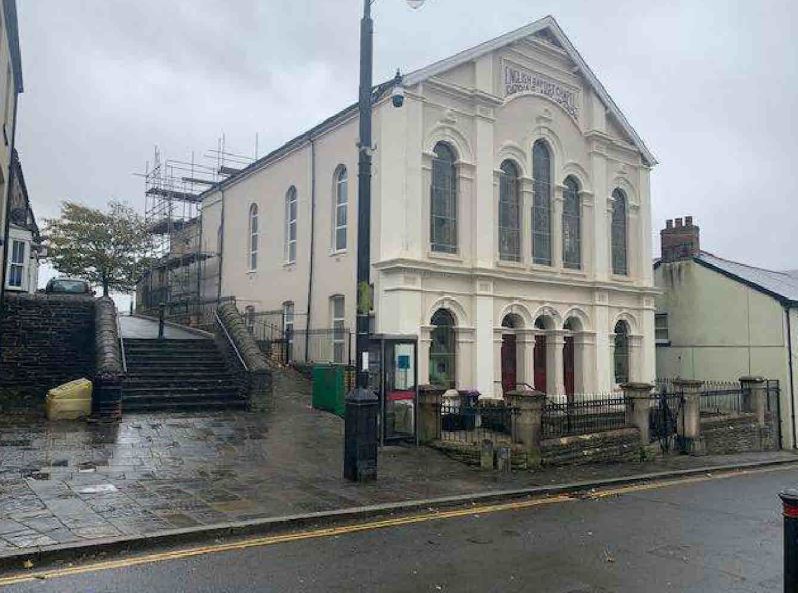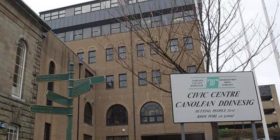Plan Agreed to Repair Water Damage to Historic Blaenavon Chapel

A PLAN to repair water damage to a chapel built by English migrants who flocked to a Gwent town during the industrial revolution has been agreed.
Moriah Chapel, on Broad Street, which is Blaenavon’s commercial centre, was granted Grade II-listed status by Welsh historic buildings body Cadw in 1995 as “a prominent later 19th century town centre chapel”.
Five years later the town was recognised as a World Heritage Site by United Nations body UNESCO due to its importance to the development of mining and ironmaking industries in the late 18th and early 19th centuries.
A painted inscription panel, centred and towards the top of the chapel’s facade, reads “English Baptist Chapel AD 1888”.
A heritage report, prepared on behalf of the chapel, said “signifcant damp issues have been a concern for some time” on the side wall of the chapel which is next to a shop, that was once the Sunday School, and is visible from the street.
Torfaen Borough Council’s planning department has agreed to the plans put forward to remove the existing pebbledash finish from the wall and replace it with a lime render. Work to clear blocked guttering and repair an overflowing downpipe will also be carried out.
London-based charity the Victorian Society, which aims to protect Victorian and Edwardian buildings, said it has no objection to the planned work.
Planning officer Rebecca McAndrew said lime render would be “an improvement which would not affect the significance of the building” and “an enhancement to the overall vistas within the town conservation area and World Heritage Site.”
Her report also said the chapel serves the community and its preservation will ensure it continues to have a viable use.
The heritage impact statement explained the chapel was first known as Blaenavon Evangelical Church and established in a “somewhat humble” building in Broad Street by English Baptists in 1844 but rebuilt in its current “much grander, classical form” in 1888.
The report stated: “An increasing number of migrants, seeking employment in Blaenavon in the nineteenth century, came from the counties of England and could not speak the Welsh language so it became necessary for English-speaking nonconformists to form their own chapels.”
2011 Census data, shared by Torfaen council, showed just 581 people or 9.98 per cent of Blaenavon’s population could speak Welsh.
Spotted something? Got a story? Email News@News.Wales








